Bezoek Milaan in 2 dags
18 must-see POIs, geoptimaliseerde routes en anekdotes.
Kaart laden...
Je gaat de mooiste bezienswaardigheden van Milaan bezoeken



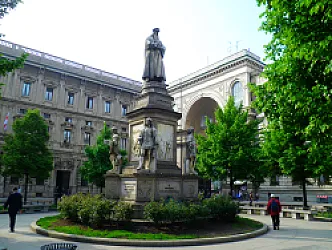
.jpg/320px-Milano_-_Monumento_Missori_(cropped).jpg)



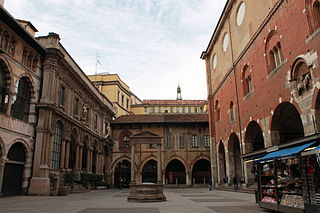








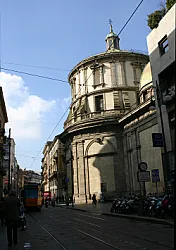
2 Days in Milan — A Compact Love Letter to Style, History, and Espresso
Milan grabbed my heart the moment sunlight spilled through the glass roof of the Galleria Vittorio Emanuele II. This city, often called the fashion capital, moves with a confident, quiet swagger. Some say it's overrated, but for me Milan's magic is in the small, lived-in moments. I wandered under arcades, sipped a bitter espresso at a corner bar, and felt instantly at home.
Why visit? Because Milan blends polished modernity with layered history in a way few cities can. It's not just about the headline sights. You’ll stroll from the shimmering Galleria Vittorio Emanuele II to the solemn grace of the Royal Palace of Milan. House Manzoni whispers literary history, while Piazza Cordusio and Piazza degli Affari pulse with urban life. Expect to hear tram bells, smell roasting coffee, and see tailored coats brushing past centuries-old stone. The feeling is elegant, unexpected, and warmly human.
Planning a trip can feel overwhelming. There is so much to see you could happily spend weeks here. If this is your first time in Milan, you might worry about missing the highlights. I get that. That’s why this Milan itinerary is focused, friendly, and realistic. Below I'll show you exactly how to spend 2 days in Milan to catch the city's essential rhythms and its hidden soul. You’ll cover key museums, grand squares, and a few secret corners that locals love.
One crucial tip before we begin: start your days early to beat the crowds and watch the city wake up. Early mornings are when the light on the cathedral is pure and the arcades feel like they belong to you. It also gives you breathing room to linger over an aperitivo later. This small habit changes everything about how you experience Milan.
Ready to find out what to see in Milan and fall in love with its contradictions? Now let's dive into the itinerary!

Quick Mini Guide to Milan
Where to stay:
- Duomo/Galleria — central, walking distance to Royal Palace and Galleria Vittorio Emanuele II; best for first-time 2‑day visits.
- Brera — artsy, great for aperitivo and proximity to Casa Manzoni and boutique shops.
- Navigli — evening atmosphere for canals and Mates, Mess and Madness MILAN tour departures.
When to visit:
- Spring or early autumn — mild weather for terraces (Duomo rooftop) and canal strolls.
- Aperitivo hours (18:00–21:00) are essential — local life peaks then in Brera/Navigli.
- Buy timed-entry for Duomo terraces and Royal Palace exhibits to skip long lines.
Things to do (2‑day plan):
- Day 1: Duomo, Galleria Vittorio Emanuele II, Royal Palace exhibition; quick walk to Piazza Cordusio and Piazza degli Affari to see the financial palazzi.
- Day 2: Casa Manzoni visit, Brera streets and Pinacoteca, afternoon Navigli canal walk and aperitivo.
- Book interactive tours: Secrets of Milan for hidden-history stories; Mates, Mess and Madness MILAN for offbeat, social evening insights.
Don't forget:
- Reserve tickets for Duomo terraces and Royal Palace in advance.
- Try risotto alla Milanese or cotoletta; enjoy an aperitivo instead of a full pre-dinner meal.
- Carry a small umbrella — sudden showers happen even in spring.
Dag 1 - Milaan
10 POIs te ontdekkenDag 1 - Ochtend à Milaan
5 Bezienswaardigheden - Duur : 2h45 - Afstand : 2 km - Wandelen : 0h27
Universiteit van Milaan
- Lid van de League of European Research Universities (LERU) en beschouwd als de eerste universiteit in Italië en de zevende in Europa volgens The Leiden Ranking.
- De universiteit bestaat uit acht faculteiten en twee scholen en biedt een breed scala aan studieprogramma's, waaronder gebieden als politieke wetenschappen, economie, informatica en rechten.
- De universiteit heeft meer dan 400 internationale academische en wetenschappelijke samenwerkingsovereenkomsten, waaronder overeenkomsten met Nieuw-Zeeland en Frankrijk.
- De universiteit van Milaan heeft leden die subsidies van de European Research Council (ERC) hebben ontvangen.
- De universiteit heeft een rijk artistiek en cultureel erfgoed, met historische gebouwen in het centrum van Milaan en moderne faciliteiten in Città Studi.
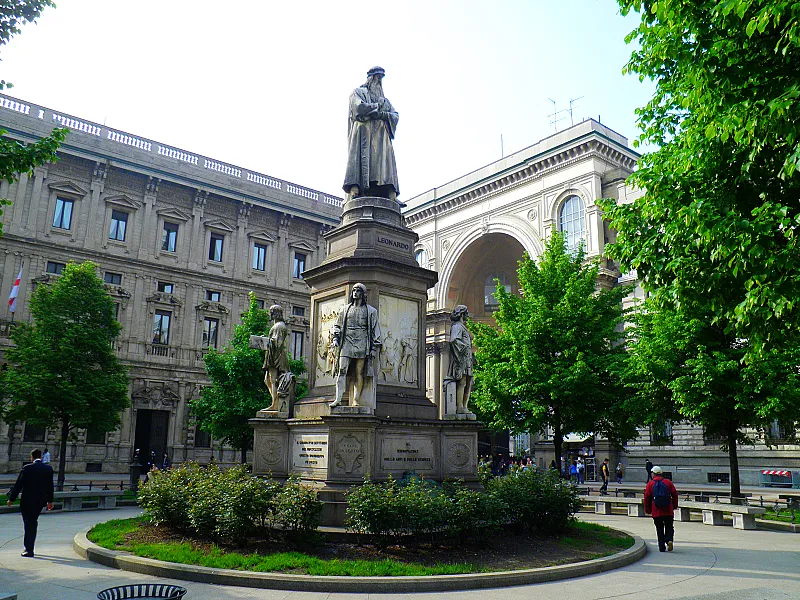
Leonardo da Vinci Monument
- Het monument werd onthuld in 1872 en is een eerbetoon aan het renaissancegenie Leonardo da Vinci.
- Het centrale beeld stelt Leonardo voor met een pen en een perkament.
- Het is ontworpen door Pietro Magni, een vooraanstaande Italiaanse beeldhouwer uit de 19e eeuw.
- In de buurt van het plein waarop het standbeeld staat, bevinden zich het Alla Scala Theater en andere bezienswaardigheden.

San Fedele
- De kerk van San Fedele in Milaan werd in de 16e eeuw gebouwd in opdracht van Sint Carlo Borromeo om de Jezuïeten te huisvesten en weerspiegelt de architectonische voorkeuren van de Contrareformatie.
- Er wordt aangenomen dat het ontwerp van de kerk werd gemaakt over een al bestaand heilig gebouw met de naam Santa Maria in Solariolo.
- San Fedele is een belangrijk architectonisch model omdat het een breed scala aan architectonische ontwerpen uit het verleden weerspiegelt en verschillende latere kerken hebben er inspiratie uit geput.
- De structuur werd in 1567 toegewezen aan de Jezuïeten die de taak op zich namen om de kerk te restaureren en uit te breiden.
- De chiesa di San Fedele liep ernstige schade op tijdens een bombardement op 16 april 1943, waarna het werd gerestaureerd en teruggegeven aan de Jezuïeten in 1945.⏳Hoewel de kerk in 1579 grotendeels voltooid was, werd de bouw van de resterende delen in de daaropvolgende eeuwen uitgevoerd door andere gerenommeerde architecten zoals Martino Bassi en Francesco Maria Richini.
Palazzo del Capitano di Giustizia
- Dit paleis werd gebouwd in de 13e eeuw.
- Het diende als residentie van de Kapiteins van Justitie van Milaan.
- Het heeft gotische en renaissance architectuur.
- De prachtige arcades en architectonische details vallen op.
- Tegenwoordig herbergt dit gebouw het hoofdkantoor van enkele gemeentelijke instellingen.
.jpg)
Monument voor Giuseppe Missori
- Het monument voor Giuseppe Missori is een bronzen beeld.
- Het beeld werd gemaakt door Riccardo Ripamonti (1849-1930).
- Het brons om het te maken, van oude kanonnen, werd gratis gegeven door de regering.
- De plaat op de voorkant vertelt een verhaal over de Slag bij Milazzo uit de memoires van Giuseppe Garibaldi.
- Dit monument werd ingehuldigd op 7 mei 1916.
- Het monument, dat Missori op zijn paard afbeeldt, trok de aandacht vanwege de ongebruikelijke houding van het paard.
Dag 1 - Middag à Milaan
5 Bezienswaardigheden - Duur : 3h30 - Afstand : 1.1 km - Wandelen : 0h15Kerk van San Gottardo in Corte
- Het gebouw is gebouwd door 1330 tot 1336 de orde van Azzon Visconti, en de hertogelijke kapel is ontworpen door de architect Francesco Pecoraro.
- Oorspronkelijk was de kerk gewijd aan Virgin, maar later droeg Azzon Visconti, die aan jicht leed, het op aan Gothard van Hildesheim, de beschermheilige van de slachtoffers van deze ziekte.
- Het interieur van de kerk werd in neoklassieke tijden gebouwd door Giocondo AlbertolliGiocondo Albertolli, met kunstwerken zoals de Kruisiging door Giotto, een doek waarop eenSt.
- Charles Borromeo door Giovanni Battista Crespi, en hetgraf van Azzone Visconti.
Monument to Vittorio Emanuele II
- Werd gemaakt door Ercole Rosa in 1879-1896.Het bevindt zich op Piazza Duomo, Milaan, Italië.
- Het is gemaakt van brons (beeld en hoogreliëfs), Carrara marmer en graniet (sokkel).

Dom van Milaan
- De bouw begon in 1386 en werd in 1965 als voltooid beschouwd, hoewel sommige blokken nog niet klaar waren.
- Franse en Italiaanse architecten waren betrokken bij verschillende bouwfasen.
- De gevel combineert gotische en renaissance-elementen.
- In 1762 werd de "Madonnina"-spits opgericht met een Mariabeeld. Leonardo da Vinci beïnvloedde het ontwerp van de koepel.
- Napoleon Bonaparte financierde de voltooiing van de gevel in 1805.

Museo del Novecento
- Toont bijna 400 voornamelijk Italiaanse kunstwerken uit de 20e eeuw.
- De collectie richt zich op Italiaanse kunstenaars uit de 20e eeuw, waaronder futuristen als Giacomo Balla en Umberto Boccioni.
- Er zijn ook werken te zien van individuele kunstenaars als de Chirico, Lucio Fontana en Morandi, evenals 20e-eeuwse kunststromingen als abstractionisme en Arte Povera.
- Het museum heeft belangrijke schenkingen ontvangen, waaronder werken van kunstenaars als Andy Warhol en Roy Lichtenstein.Onder de opmerkelijke werken van het museum bevinden zich Giuseppe Pellizza's "Il Quarto Stato" en Giacomo Bella's "Ragazza che corre sul balcone".
Kerk van San Carlo al Corso
- Het huidige gebouw werd gebouwd ter vervanging van de middeleeuwse kerk Santa Maria dei Servi en heeft een neoklassieke stijl geïnspireerd op het Pantheon in Rome.
- De basiliek werd gebouwd tussen 1832 en 1847 onder leiding van de architecten Carlo Amati en Filippo Pizzagalli.
- De kerk is gewijd aan Sint Charles Borromeo en werd gebouwd als dank voor het stoppen van een cholera-epidemie in de regio.
- Op het hoofdaltaar staat een houten kruisbeeld van Pompeo Marchesi en in het aangrenzende klooster worden altaarstukken van beroemde kunstenaars bewaard.
- Er is ook een bibliotheek in de rechter portiek en een orgel in het linkerkoor van het priesterkoor.
Dag 2 - Milaan
8 POIs te ontdekkenDag 2 - Ochtend à Milaan
5 Bezienswaardigheden - Duur : 3h30 - Afstand : 1.6 km - Wandelen : 0h21
Teatro dal Verme
- Ontworpen door Giuseppe Pestagalli in opdracht van graaf Francesco Dal Verme.
- Vooral gebruikt voor theater en opera in de 19e en begin 20e eeuw.
- Tegenwoordig gebruikt als concertzaal, theater, danszaal, tentoonstellingen en conferenties. had oorspronkelijk 3000 zitplaatsen en een grote koepel.
- Geopend op 14 september 1872 met een uitvoering van Meyerbeers "Les Huguenots".
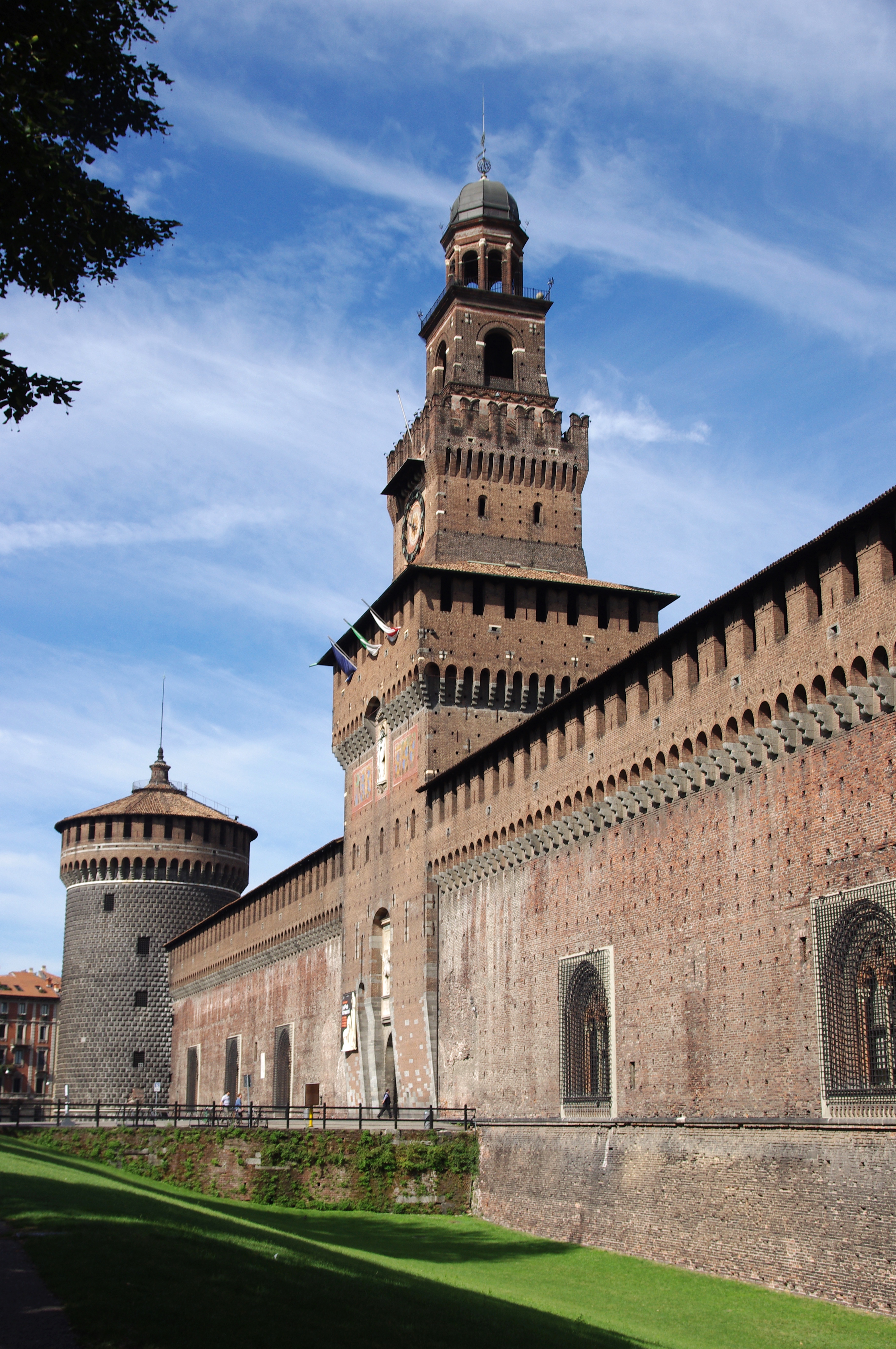
Castello Sforzesco
- Het Sempione Park ligt ten noorden van het kasteel.
- Gebouwd in de 14e eeuw en aangepast door latere generaties.
- Gebruikt als residentie door de familie Sforza en gedecoreerd door kunstenaars als Leonardo da Vinci. heeft een vierkante indeling met vier hoekige torens en is door de geschiedenis heen beschadigd. herbergt onder andere het Archeologisch Museum, het Museum voor Oude Kunst en de Pinacoteca, met werken van beroemde kunstenaars.
- In het kasteel zijn werken gevonden die worden toegeschreven aan Caravaggio en ongepubliceerde tekeningen van Leonardo da Vinci.

Palazzo dei Giureconsulti
- Palazzo dei Giureconsulti is een historisch maniëristisch paleis in Milaan.
- Het werd in 1562 gebouwd naar een ontwerp van Vincenzo Seregni.
- In zijn geschiedenis huisvestte het het Collegio dei Nobili Dottori en later de Borsa Valori en de Camera di Commercio.
- Beschadigd door bommen in 1945, werd het in 1991 gerestaureerd en omgedoopt tot Palazzo Affari ai Giureconsulti.
- Het paleis heeft een oppervlakte van 4000 m2 verdeeld over vier verdiepingen en verschillende zalen voor vergaderingen en tentoonstellingen.
Piazza Mercanti
- Aangelegd in de Middeleeuwen en later omgevormd tot Via Mercanti.
- Omringd door het Palazzo della Ragione, het Casa dei Panigarola en de Loggia degli Osii.
- Opgericht in de 13e eeuw, oorspronkelijk breder met ingangen naar verschillende delen van de stad.
- In het midden van het plein staat een 16e-eeuwse fontein.
- Onder de beeldhouwwerken bevinden zich een Romeins reliëf met de afbeelding van de semilanuta scrofa en een standbeeld van de Podestà Oldrado da Tresseno.
- Er zijn ook monumenten voor de dichter Decimus Magnus Ausonius en Sant'Agostino.

San Sepolcro
- De kerk van San Sepolcro is een katholieke gebedsplaats, oorspronkelijk gesticht in 1030 en door de eeuwen heen uitgebreid gewijzigd.
- Het gebouw heette oorspronkelijk Santissima Trinità door de stichter, Benedetto Ronzone, en werd gebouwd op een Romeins forum.
- In 1100 wijdde aartsbisschop Anselmo da Bovisio de kerk opnieuw aan het Heilig Graf van Jeruzalem ter ere van het belang van de heilige plaatsen tijdens de kruistochten.
- Het ontwerp van de kerk, dat door de stichter de vorm van een kruis had gekregen, werd na de eerste kruistocht aangepast om te lijken op de Anastasis in Jeruzalem.
- De kerk onderging verschillende restauraties, waaronder een barokke stijl in 1605 door architect Aurelio Trezzi en een terugkeer naar de romaanse stijl aan het eind van de 19e eeuw.
- In 1928 werd de kerk aangekocht door de Ambrosius Bibliotheek en verloor het zijn status als parochie, maar het werd gebruikt als een plaats voor kunsttentoonstellingen na de restauratie in 1968.
Dag 2 - Middag à Milaan
3 Bezienswaardigheden - Duur : 2h00 - Afstand : 0.6 km - Wandelen : 0h07Piazza degli Affari
- Zetel van de beurs van Milaan, opgericht op 16 januari 1808.
- Plaats van het Romeinse theater van Milaan, gebouwd in de 1e eeuw voor Christus en verwoest in 1162.
- Met twee majestueuze paleizen, Palazzo Mezzanotte en een ander, gerenoveerd in 1930-1939.
- De sculptuur "L.O.V.E." van Maurizio Cattelan met een afgehakte hand op de middelvinger na, geplaatst in het midden van het plein in 2010.

Piazza Cordusio
- Het herbergt het hoofdkantoor van UniCredit en dochterondernemingen van Intesa Sanpaolo en Barclays.
- Palazzo Broggi was tussen 1901 en 1932 de zetel van de beurs van Milaan.
- De geschiedenis van het plein gaat terug tot de Lombardische periode.
- In de 19e en 20e eeuw onderging het plein veranderingen in het ontwerp en de gebouwen.
- Het plein komt voor in films als "Gli uomini, che mascalzoni..." en "La corruzione.".
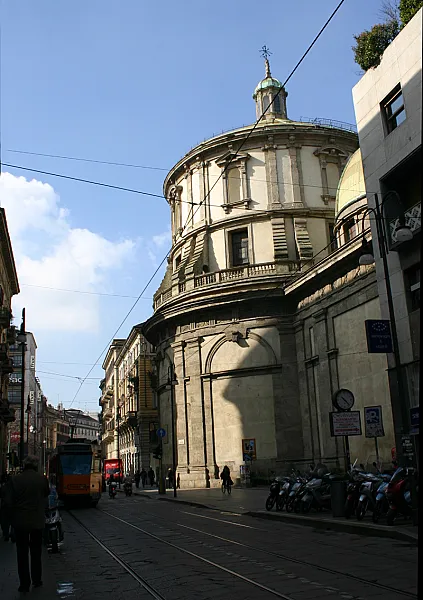
San Sebastiano
- De Tempio Civico di San Sebastiano is ontworpen door Pellegrino Tibaldi (1527-1596) en de bouw begon in 1576.
- De kerk werd gebouwd door de gouverneur van Milaan, Antonio de Guzmán Zúñiga y Sotomayor als reactie op een verwoestende plaag die de stad had getroffen.
- Het gebouw werd voltooid in 1616.
- Het onderging administratieve veranderingen tussen de Curia en het kantoor van de gouverneur, totdat het in 1861 werd toevertrouwd aan een gemeentelijk "conservatorium", voornamelijk voor artistieke bescherming.
- Het innovatieve project voor Tempio Civico di San Sebastiano, ontwikkeld door Tibaldi, hield rekening met de beperkte beschikbare ruimte en de schaarse fondsen voor de bouw.
- Het ontwerp werd uiteindelijk een perfect cilindrische structuur, een veelvoorkomend kenmerk in vroegchristelijke kerken.
- De kerk herbergt een pijporgel, gebouwd in 1928 door Balbiani-Vegezzi Bossi, dat zich in twee ingewikkeld gebeeldhouwde kasten bevindt.
- De kerk heeft altijd een fundamenteel ambigue, civiele en religieuze status gehad, aangezien het vanaf het begin van de bouw een gezamenlijke onderneming was.
Where to Stay in Milan
For a two-day stay in Milan, location matters more than anything else: you want to spend your time inside the ring of historic streets rather than fighting traffic. The centre is compact and pleasantly walkable, so choosing a base near the Duomo area lets you step out and reach the Galleria Vittorio Emanuele II, the Royal Palace of Milan and the theatres within minutes. Staying centrally means mornings for museums and afternoons for wandering charming streets, with evenings spent in one of Milan’s lively squares or quiet inner courtyards.
Understanding how the city is organized helps pick the right neighborhood. Milan’s heart is a cluster of distinct quarters radiating from the cathedral: elegant shopping avenues and grand arcades to the south, refined residential streets and museums to the east, and lively cafés and galleries to the north. Public transport — a dense network of metro lines, trams and buses — fans out from this core, so even if your room isn’t just off the piazza you can be there in ten minutes.
If your priority is immediate access to the Galleria Vittorio Emanuele II and the Royal Palace of Milan, aim for the Duomo/Centro Storico area where centuries of architecture sit side by side. If you prefer a slightly quieter, more atmospheric base with narrow streets, galleries and café culture, the Brera district sits a short stroll away and is perfect for afternoons spent exploring House Manzoni and nearby art attractions. For businesslike convenience with quick links to the stock exchange and historic banking quarter, the Cordusio/Piazza degli Affari area places you close to trams, metros and iconic façades.
Transport tips are simple and practical: choose lodging within a short walk of a metro station (lines M1, M3 cover the central spine) or a major tram stop so you can hop back to your room quickly between excursions. Taxis are plentiful but traffic can be slow; if you arrive by train, the central station gives excellent metro connections. If you stay a little farther out, opt for places with easy luggage storage and clear check-in instructions so your first and last day remain stress-free.
Finally, trust your comfort: for two days, a small boutique hotel, a family-run B&B or a serviced apartment near the centre will maximize sightseeing time. Look for rooms facing inner courtyards or quiet side streets for better sleep, and pick accommodation with flexible check-in when possible — that one thoughtful detail will make your short Milan stay calm, efficient and delightfully local.
Getting Around Milan
Milan’s public transport is surprisingly friendly for visitors — compact, frequent and easy to read once you know the basics. The heart of the city is served by an obvious network: the Metro lines link major sights, elegant surface trams glide through historic streets, and buses fill in the gaps. The operator, ATM, keeps signs clear and maps printable at stations, so even if Italian isn’t your strong suit you’ll find color-coded lines and station names that match your smartphone. I love how approachable it feels: on my first afternoon I hopped off the metro, followed the signs to the Galleria and instantly felt at home among the bustle. 🚇
Practicalities are simple. You can buy a single ticket from station machines, tabaccherie or the official app, and you must validate that ticket when you board or pass through turnstiles — in Milan the rule is to validate once and your ride is good for 90 minutes. If you plan several hops in a day, consider a 24/48/72-hour pass or the tourist MilanoCard which bundles transport with museum discounts; prices vary but a single ticket is roughly €2.20 and day passes often start around €7, so a quick math check often pays off. 🎫
Use Google Maps like a local guide: switch to the transit layer, pick your departure time and watch step-by-step directions that include platform names, walking times and scheduled departures. It will tell you whether it’s faster to walk from the Galleria Vittorio Emanuele II to your next stop or to wait two minutes for a tram. I always check live departures so I’m not standing on a windy corner — and Maps’ walking directions through Milan’s arcades are great for discovering shortcuts and arcaded streets you’d otherwise miss. 🗺️
Money-saving tip: if you’ll visit several museums and move around the center, a multi-day pass quickly pays for itself. Buy tickets in advance on the app to skip queues, validate every ride to avoid fines, and remember that many attractions — including the Royal Palace of Milan area — are close enough to combine walking with a single short ride. Small choices add up: a little planning saved us several euros and gave us more time to sip espresso instead of queuing.
Personal note: once, weary after a morning at the Duomo and Galleria, we wanted to reach the House Manzoni without dragging luggage. We scanned a digital single ticket on the ATM app, hopped on a tram that showed up in two minutes, validated on board with the little machine and enjoyed a scenic five-minute ride across the fashion district. It felt effortless — with a validated ticket, clear signs and Google Maps in my pocket, navigating Milan quickly becomes part of the fun. 💡
What to Pack for Milan
Two days in Milan is a sprint of churches, arcades, squares and cafés — I always treat it like a stylish city scavenger hunt. On my last short trip I was out for 10+ hours each day and walked about 12 miles (19 km) total, so I pack for comfort, pickpocket smart, and a little flair. Below are the essentials I actually use and why each one matters in real Milan situations.
1. Comfortable walking shoes (required — e.g., New Balance 574 or ECCO Soft 7): I learned this the hard way after a day from Duomo to Navigli where I walked 15 miles and regretted fashion heels instantly. Stiff soles and good cushioning saved my second day. Milan has cobblestones and long indoor arcades; breathable, supportive shoes keep you exploring all day.
2. Cross-body bag (zippered, worn in front): I carry a compact cross-body with a secure zipper and inner pocket — once I felt a hand on a crowded tram near Centrale, and having the bag worn in front prevented a pickpocket attempt. It’s hands-free for maps and espresso runs and the best way to protect phone, wallet and metro ticket in busy Galleria Vittorio Emanuele II.
3. Weather-appropriate clothing for Milan (light layers + a smart jacket): Milaners dress sharp but the weather shifts—during one spring visit mornings were cool and afternoons were sunny. I bring thin layers, a lightweight waterproof jacket, and a scarf. Layers mean you’re comfortable inside stylish cafés and outdoors in the square without looking out of place.
4. Power adapter (Type L for Italy, 230V): My phone and camera ran dead mid-afternoon on day one until I used a proper Italian adapter. Cafés don’t always have convenient sockets, so a small Type L adapter avoids hunting for a charger and keeps your devices ready for photo-heavy museum-free days.
5. Power bank (10,000 mAh+): I carried a 10,000 mAh power bank and topped up phones between stops — essential when you're out for 8–12 hours taking photos, using maps and checking tram times. Choose one that can fully recharge a smartphone at least once or twice.
6. Optional extras — compact umbrella & sunglasses: Milan’s weather can flip; a compact umbrella fits a small bag and saved me from a sudden shower. Sunglasses are a must for sunny piazzas and reflective shop windows. Both are small, practical additions that kept me comfortable and camera-ready.
Enjoy Your Trip to Milan !
In two energetic days you'll explore 14 carefully chosen spots across Milan, from the grand arcades of the Galleria Vittorio Emanuele II to the intimate House Manzoni and the stately Royal Palace of Milan. This itinerary is packed with historic architecture, vibrant squares, top museums and shopping moments—everything you need to taste Milan in a weekend.
Remember, this is a guide, not a strict schedule. Let it steer you, but leave room for the unexpected: the real magic often happens in unplanned moments—getting delightfully lost in Navigli lanes, stumbling on a tiny museum, or lingering over an espresso at a corner café. Don’t feel you must see EVERYTHING; slow down, savor, and follow curiosities with a relaxed heart.
I hope you feel excited and ready—I’m genuinely excited for you! Embrace the rhythm of Milan, from opera echoes at La Scala to sunlit piazzas, and let yourself collect unforgettable memories. You're going to love the small surprises as much as the big sights; enjoy every vibrant moment and the people you meet along the way.
Want to explore Milan in a playful way? Check out Coddy’s interactive tours—Secrets of Milan, Mates, and Mess and Madness MILAN—perfect for turning sightseeing into a gamified adventure. They’re a fun, relaxed way to discover hidden stories while you wander and playfully compete or collaborate.
Have an incredible two days—soak in the style, history, and espresso-fueled moments. If you want tips or want to share photos, ask me anytime. Enjoy! Safe travels!
Wil je meer avontuur?
Ontdek onze stedelijke escape games om je bezoek om te toveren tot een interactief avontuur!















